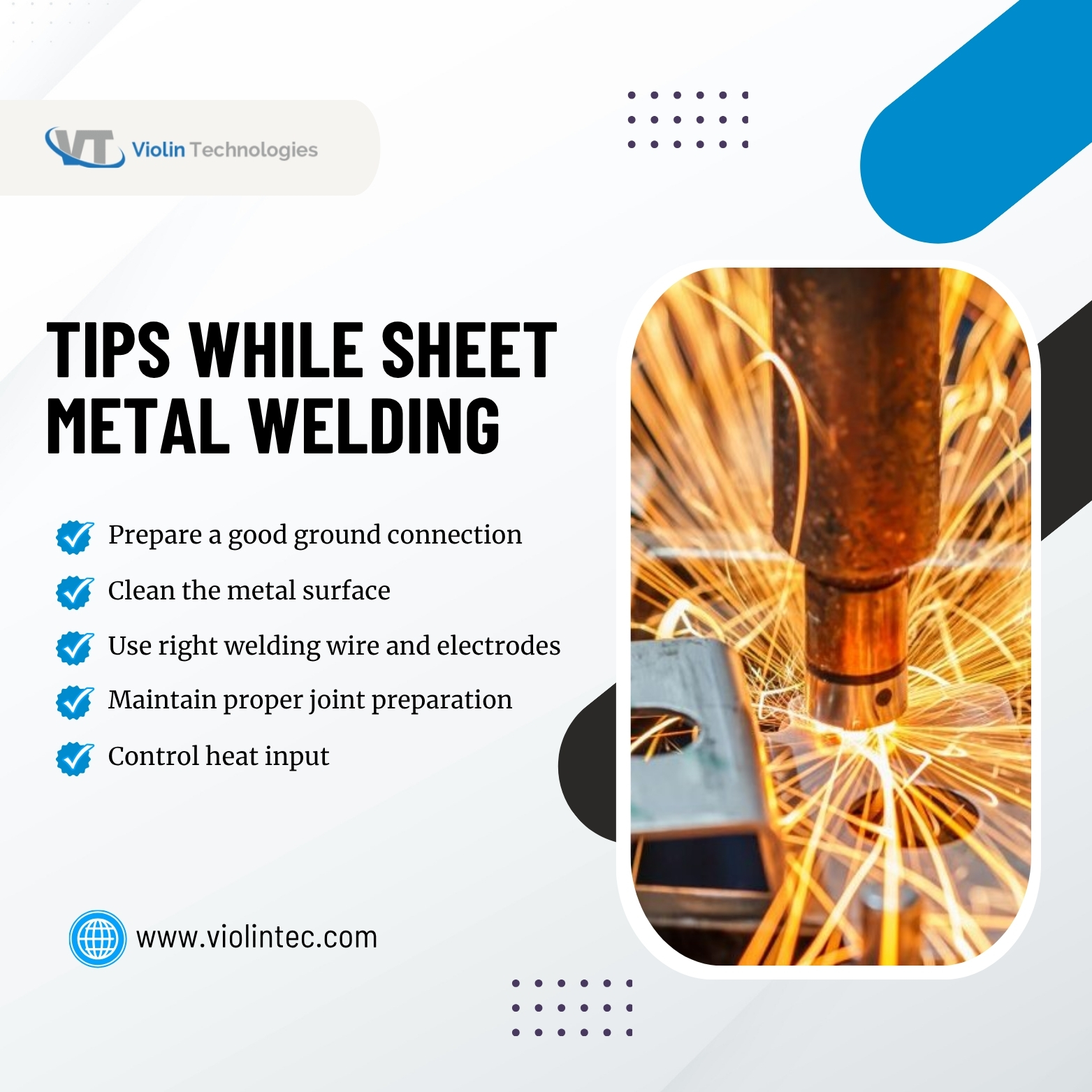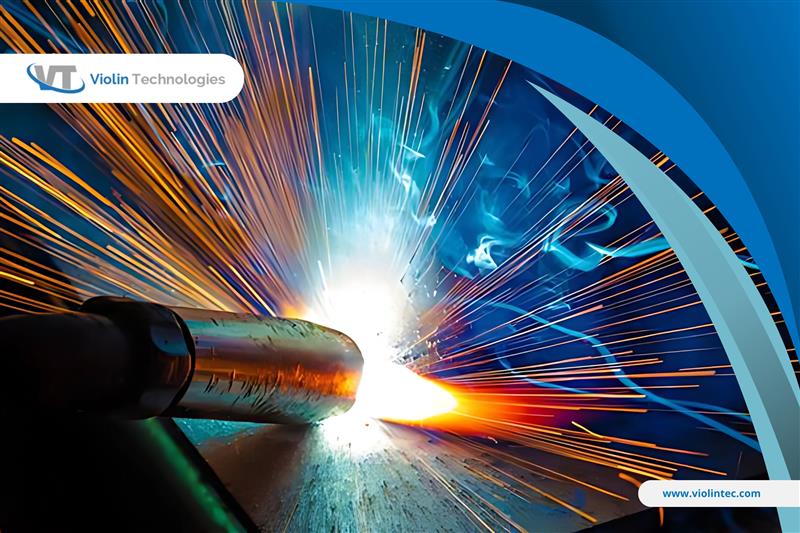What we cover in this blog?
Understanding Sheet Metal Welding
One of the pivotal methods for combining metals in the manufacturing sector is welding sheet metal. Typically, the procedure entails melting the two sheet metal pieces together and then welding them with a torch.
Here are 10 important tips to master sheet metal welding with confidence and quality results.
Tips to Master Sheet Metal Welding
1. Prepare a Good Ground Connection
Proper grounding is vital for a stable welding. Make sure your earth clamp is attached as close as possible to the metal piece you are welding, ideally on bare, clean metal. A poor or distant ground connection causes an unstable arc, resulting in weak welds and spatter.
2. Clean the Metal Surface Thoroughly
Contaminants such as oil, grease, paint, rust, or dirt can compromise your weld by causing porosity and weak joints. Before welding, clean the metal surface using wire brushes, solvents, or grinders to expose clean, bare metal for a solid weld.
3. Use the Right Welding Wire and Electrodes
For sheet metal, smaller diameter wire or electrodes (e.g., 0.023–0.030-inch wire for MIG) generate less heat and provide better control. Using wires and rods thinner than the sheet thickness prevents excessive heat input, reducing the risk of burn-through and warping.
4. Maintain Tight Fit-Up and Proper Joint Preparation
Sheet metal joints should be closely fitted with minimal gaps to avoid burn-through and weak welds. For butt joints, slightly bending one metal edge can improve fit-up. Ensure joint edges are clean and square for consistent weld penetration.
5. Control Heat Input by Adjusting Settings
Thin metal requires lower amperage/voltage settings to prevent melting through. Use a short arc length and maintain a consistent but fast travel speed to avoid excessive heat buildup. Too much heat can distort the metal and weaken the weld.

6. Use Tack Welding to Maintain Alignment
Tack welds are small temporary spots that hold the metal sheets in place before running full welds. Strategically spaced tack welds (every few inches) prevent movement and warping during welding, especially on larger panels.
7. Employ Skip or Stitch Welding Techniques
Instead of continuous welds, use skip welding, where short weld segments are placed intermittently along the joint. Allow the welds to cool slightly before filling in the skipped sections. This technique distributes heat evenly, reducing distortion and warping in thin sheets.
8. Use Backing Bars or Plates
Clamping copper or aluminum backing bars behind the weld zone helps absorb and dissipate heat quickly. This prevents burn-through and reduces warpage by stabilizing the heat-affected zone, especially useful for extremely thin metal.
9. Avoid Weaving the Welding Torch Excessively
Welding in a straight line with steady, consistent travel speed is key for sheet metal. Weaving can concentrate heat and enlarge the weld puddle, increasing the risk of burn-through. Use a “push” technique, pointing the gun at the cooler molten puddle edge for better control.
10. Practice Safety and Use Proper Personal Protective Equipment (PPE)
Sheet metal welding produces intense heat, bright arcs, and sometimes harmful fumes. Always put on a welding helmet with the appropriate lens shade, gloves, flame-resistant clothing, and ensure good ventilation. Keep a fire extinguisher nearby for emergencies.
Reliable sheet metal and stamped parts suppliers deliver precision-engineered components to meet your industrial needs with quality and on-time delivery.
Conclusion
By following the best practices for sheet metal welding, welders can achieve clean, strong, and distortion-minimized welds on even the thinnest metals. Some additional advice includes testing your settings on scrap metal before starting your project, understanding your welding machine’s capabilities, and regularly practicing technique and speed.
Mastering sheet metal welding is as much about precision and preparation as it is about technique. Careful attention to each step will save rework time, reduce waste, and yield professional-quality results you can trust.
FAQs
1. Why is it important to clean sheet metal before welding?
Removing dirt, rust, and oil helps your welds come out strong and smooth, without holes or weak spots.
2. What’s the best way to avoid warping or burn-through on thin sheet metal?
Use lower heat settings and weld in short bursts or sections to prevent the metal from overheating and warping out of shape.
3. How do tack welds help when welding sheet metal?
Quick tack welds hold your pieces in place, keeping everything lined up and steady until you finish the full welding run.
4. What’s a simple safety tip for sheet metal welding?
Always wear a welding helmet, gloves, and work in a well-ventilated area to protect yourself from burns and fumes.

